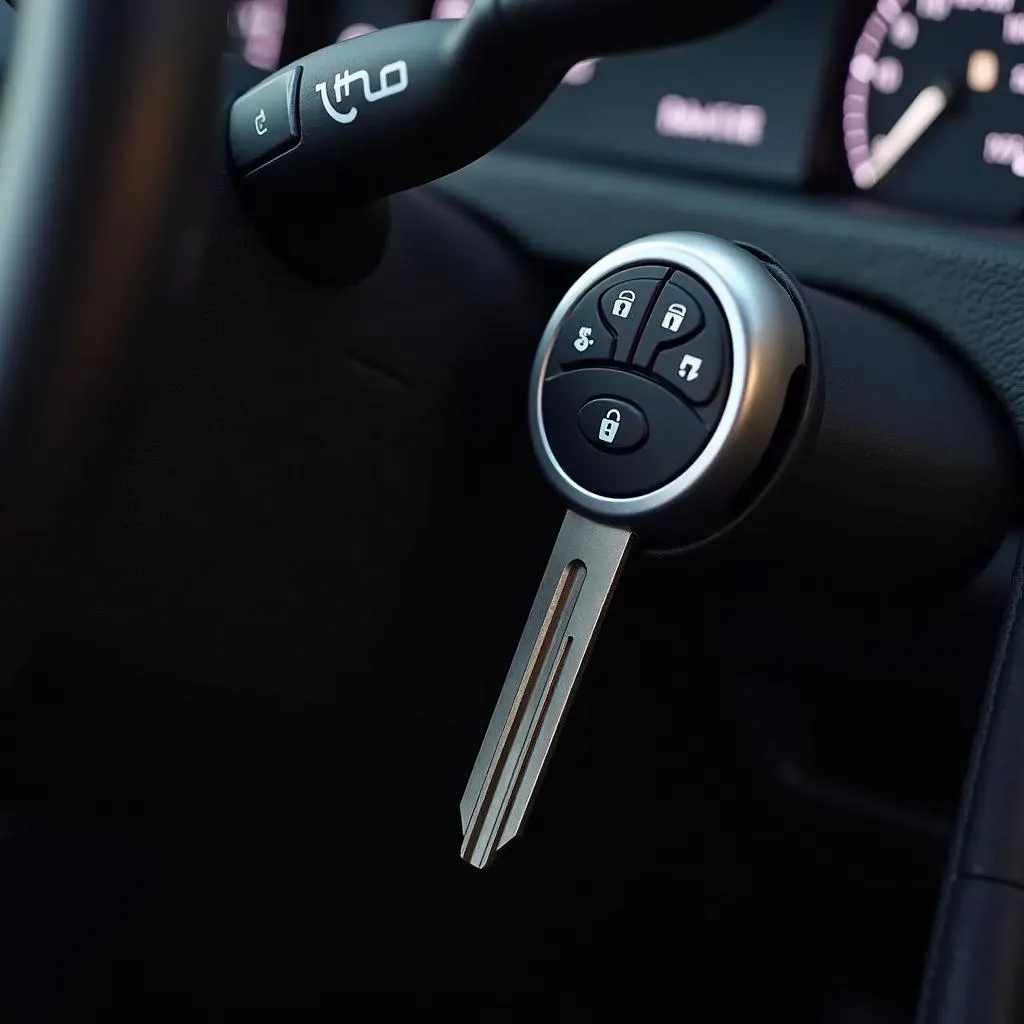The emergency brake warning light on your 2003 Ram 3500 Diesel is a crucial safety feature that should never be ignored. When illuminated, it signals a potential issue with your braking system that needs immediate attention. While the emergency brake itself might be the culprit, the underlying cause can stem from various factors. This comprehensive guide delves into the common reasons behind a lit emergency brake warning light on a 2003 Ram 3500 Diesel and provides practical solutions to get you back on the road safely.
Common Causes of an Illuminated Emergency Brake Light
Let’s explore the possible culprits behind that persistent warning light:
1. Engaged Parking Brake
The most obvious reason, and often overlooked, is an engaged parking brake. Before diving into complex diagnoses, ensure the parking brake lever is fully released.
2. Low Brake Fluid
Your brake system relies on hydraulic pressure generated by brake fluid. Low fluid levels, often due to leaks or worn brake pads, can trigger the warning light.
3. Faulty Brake Light Switch
The brake light switch, activated when you press the brake pedal, also plays a role in the emergency brake warning system. A malfunctioning switch can disrupt the circuit, leading to a false warning light.
4. Worn Brake Pads
As brake pads wear down, the brake caliper pistons extend further to maintain contact with the rotors. This excessive piston travel can trigger the low brake fluid sensor, illuminating the warning light.
5. ABS Issues
While less common, problems within the Anti-lock Braking System (ABS), such as a faulty sensor or control module, can interfere with the brake system’s electronics, causing the emergency brake warning light to activate.
Troubleshooting the Emergency Brake Warning Light
Follow these steps to troubleshoot the issue:
- Check the Parking Brake: Ensure the parking brake lever is fully disengaged.
- Inspect Brake Fluid Level: Open the hood and locate the brake fluid reservoir. Check if the fluid level is within the “MIN” and “MAX” markings.
- Inspect for Leaks: Examine the brake lines, hoses, and calipers for any signs of fluid leakage.
- Check Brake Pad Thickness: Visually inspect the brake pads through the wheel spokes. If they appear thin, measure their thickness to determine if they need replacement.
- Scan for Diagnostic Trouble Codes: If the above steps don’t reveal the issue, use an OBD-II scanner to retrieve diagnostic trouble codes from your truck’s computer. These codes can pinpoint the specific area of the braking system requiring attention.
Remote Diagnostics and Programming: A Modern Solution
In today’s technologically advanced world, remote diagnostics and programming offer a convenient and efficient way to diagnose and even resolve certain vehicle issues, including those related to the emergency brake system.
By leveraging specialized software and a secure connection, skilled technicians can remotely access your 2003 Ram 3500 Diesel’s onboard computer system to:
- Retrieve Diagnostic Trouble Codes: Identify specific fault codes related to the emergency brake system.
- Analyze Live Data Stream: Monitor real-time sensor readings and system parameters to pinpoint malfunctions.
- Perform Software Updates and Recalibrations: Address software glitches or compatibility issues that might be contributing to the warning light.
“Remote diagnostics allow us to offer quicker and more precise solutions to our customers,” says John Smith, Senior Automotive Diagnostic Technician at XYZ Auto Services. “We can often identify the root cause of the problem and guide the owner on necessary repairs without them even needing to leave their home.”
Conclusion
A glowing emergency brake warning light on your 2003 Ram 3500 Diesel is a serious safety concern that should never be ignored. By understanding the potential causes and following the troubleshooting steps outlined above, you can address the issue promptly and ensure safe braking performance. Remember, if you’re uncomfortable performing any of these tasks, seeking professional assistance from a qualified mechanic is always the safest course of action.


